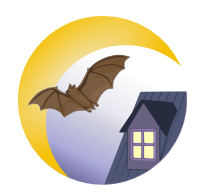California myotis

Latin name: Myotis californicus
Average size: Total length of 7-10 cm
Wingspan: 20-25 cm
Weight: 3-6 g
External characteristics: The California myotis is one of the smallest species in Canada. Its fur is long and matte and has a colour that varies from rusty to blackish brown. Its ears and the membranes of its tail and wings are black. Its ears extend beyond its nose when they are pushed forward. Its tragus is long and narrow. Females are larger than males.
Habitat: California bats tolerate a broad variety of habitats. In British Columbia, this species inhabits arid grasslands, humid coastal forests and montane forests. During the daytime, they roost in rock crevices, tree cavities, buildings, and mine tunnels, as well as spaces under the bark of trees, and bridges. Many California myotis are active in the winter, but those who live in at higher altitudes or farther north, like in British Columbia, make short migrations and hibernate.
Reproduction: Mating occurs in the fall. Sperm is stored in the body of females during the winter, and fertilization occurs in the spring. Between mid-May and the end of June, females regroup in maternity colonies to give birth to their young. A single offspring is born in late June or early July. The young develop rapidly and can fly approximately one month after birth.
Seen in: British-Columbia

